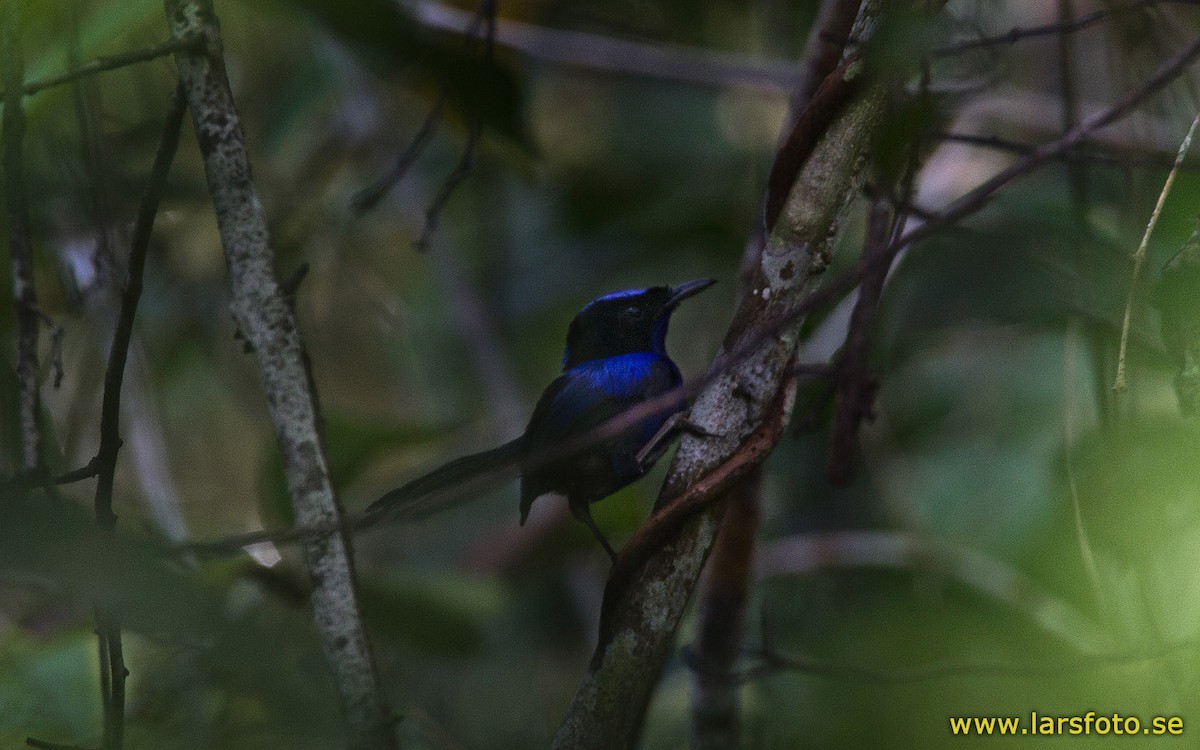Emperor Fairywren
A species of Fairywrens Scientific name : Malurus cyanocephalus Genus : Fairywrens
Emperor Fairywren, A species of Fairywrens
Botanical name: Malurus cyanocephalus
Genus: Fairywrens
Content
Description General Info
 Photo By Lars Petersson
Photo By Lars Petersson Description
It is the largest fairy-wren. It is 13–16 cm (5.1–6.3 in) long and weighs 12–17 g (0.42–0.60 oz). Males of the nominate race have light royal blue crowns. The forehead, lores, and the side of the head up till the narrow collar is black. The upper back, along with the scapulars and uppertail-coverts is a deep turquoise-blue, with the lower back being blue-black. The upperwing and the tail are blackish-blue with tinges of blue, and the throats and underparts are a navy blue in color. It has dark brown eyes, black bill, and dark grey-brown legs. Females of the nominate race have a head that looks similar to the male, but have chestnut upperparts, white underparts, deep blue throats, and a black tail with whitish tips. They also have lighter are more mid-brown legs. Juveniles look like females, but have a dusky head, rusty brown upperparts, and entirely white underparts. M. c. mysorensis differs slightly in appearance with its crown being cobalt blue instead of royal blue, and M. c. bonapartii is slightly darker than the nominate race. 
Size
16 cm
Nest Placement
Shrub
Feeding Habits
Emperor Fairywren's diet predominantly consists of arthropods like beetles, bugs, moths, grasshoppers, and spiders. Emperor Fairywren forages in vocal family groups, searching for insects on leaves, palm fronds, and branches up to 1 m off the ground.
Habitat
The habitat of emperor Fairywren encompasses dense secondary growth typically found along the margins of forest areas. These birds thrive in environments that offer a mix of vegetation clearance and regrowth, such as openings in forests, alongside rivers, near roads, and in overgrown gardens. The general environmental conditions are characterized by rich plant life that provides ample cover and foraging opportunities.
Dite type
Insectivorous
General Info
Feeding Habits
Bird food type
Distribution Area
It is found on the island of New Guinea and the Aru Islands. It is found in tropical lowland, forests, wetlands, and degraded former forests. They inhabit dense secondary growth that occurs at the edges of forest, along with forest openings, riversides, roadsides and overgrown gardens. They are not as affected by habitat disturbance and appear to like disturbed habitats like gardens and parks. 

 Photo By Lars Petersson
Photo By Lars Petersson Scientific Classification
Phylum
Chordates Class
Birds Order
Perching birds Family
Australasian wrens Genus
Fairywrens Species
Emperor Fairywren